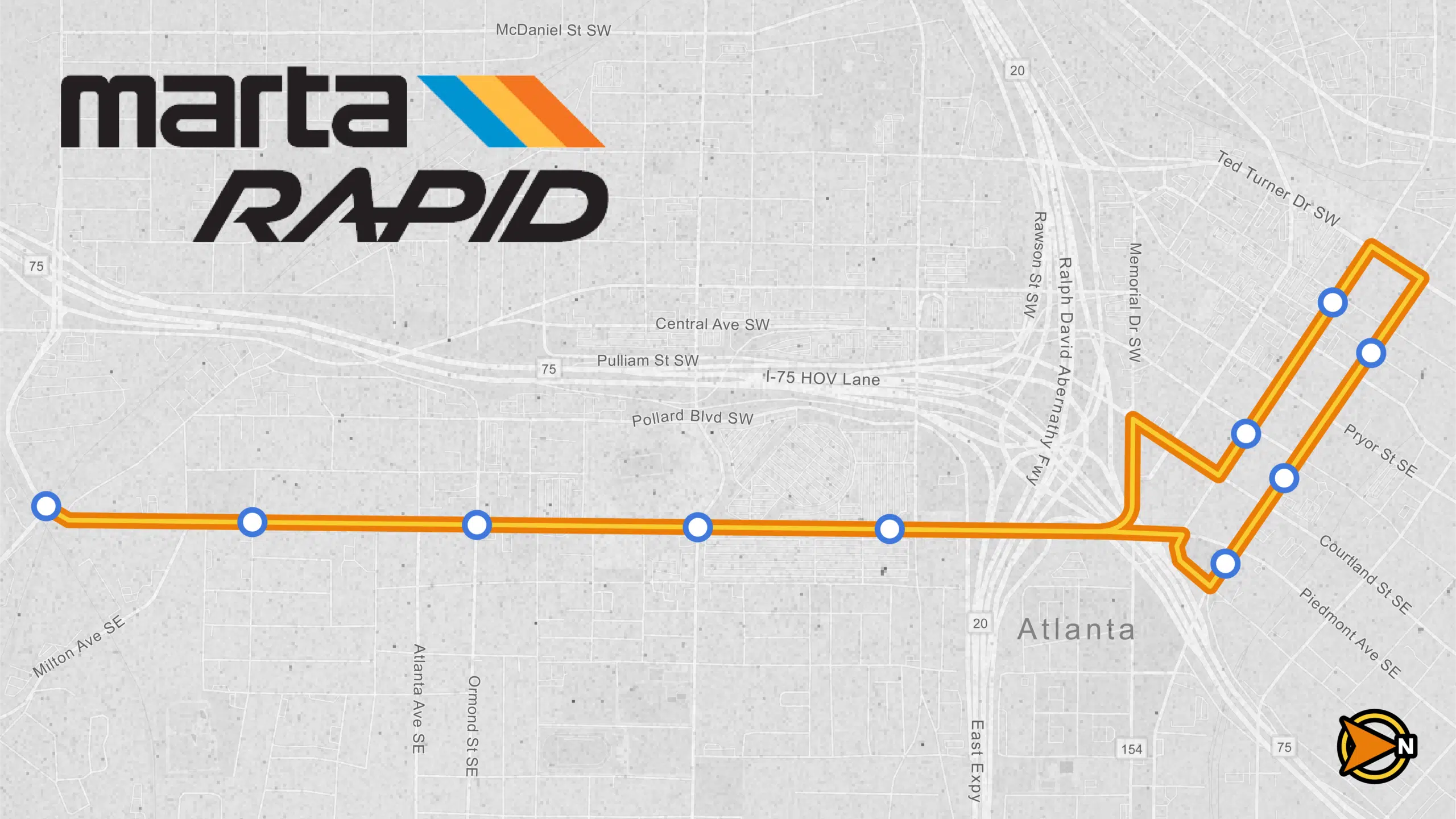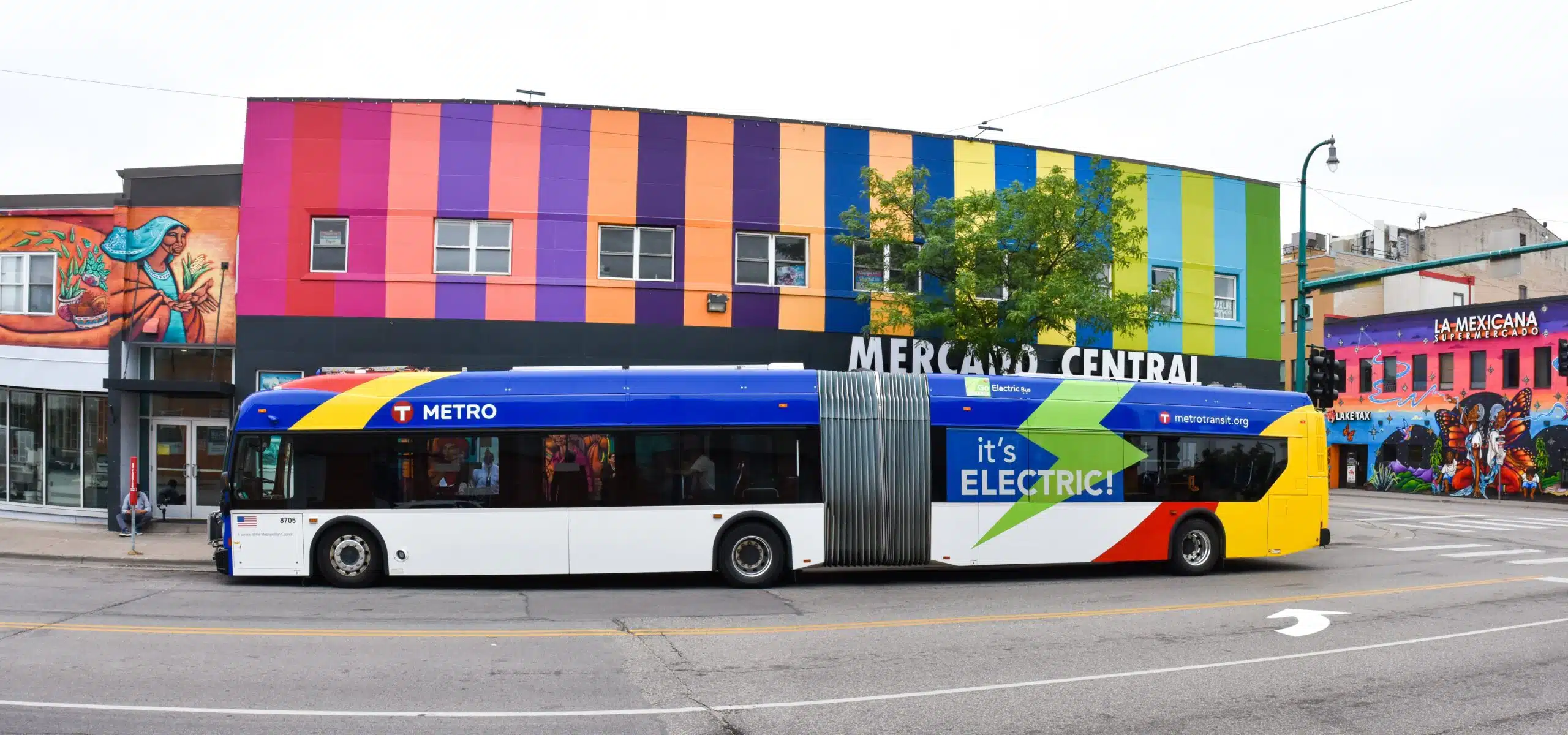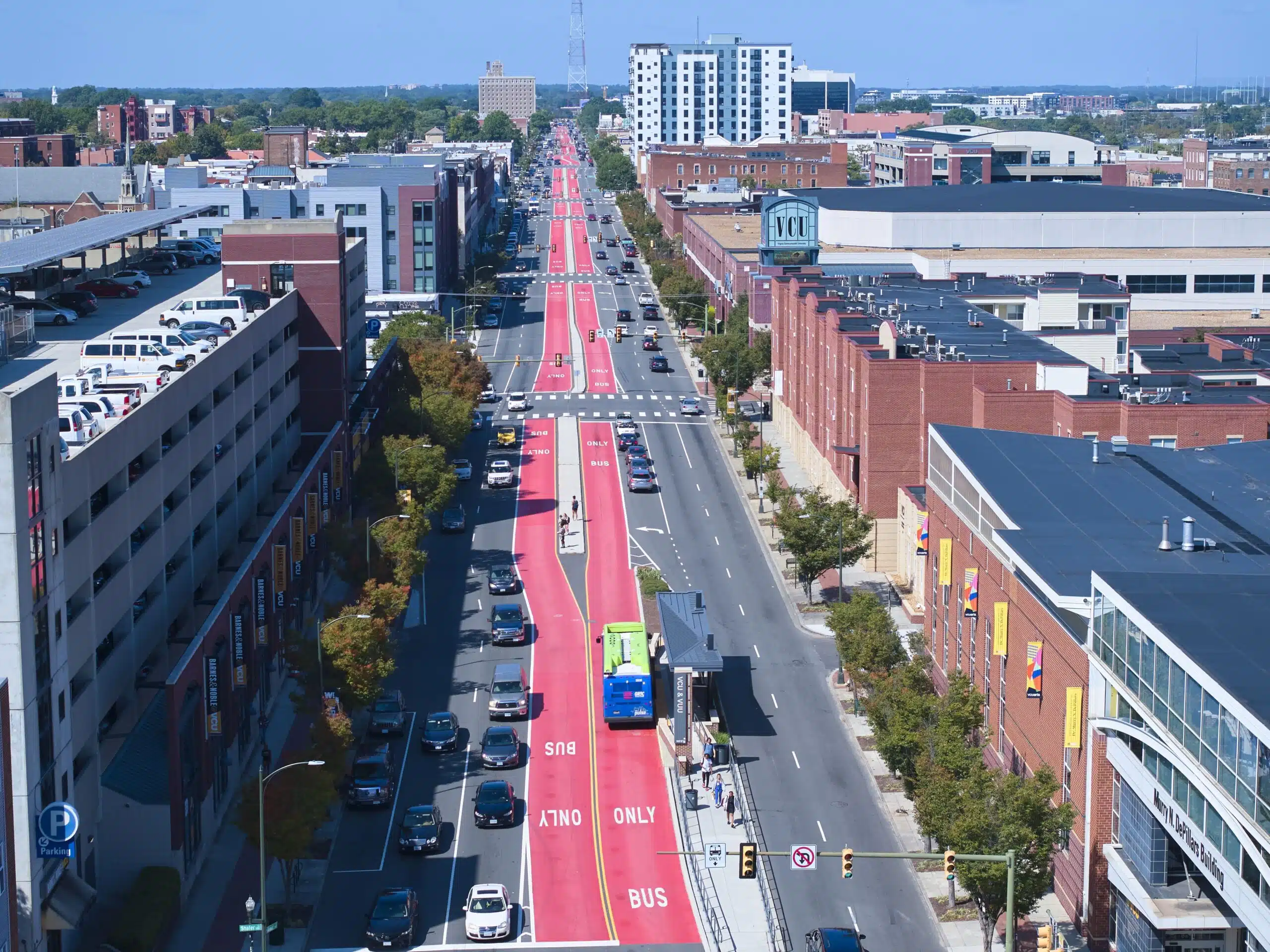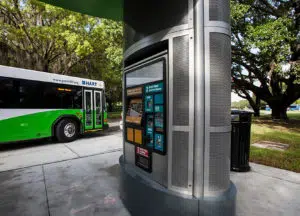Kimley-Horn provided final design and design services during construction for the MARTA Rapid A-Line Bus Rapid Transit...
Stakeholder Collaboration
Served as the conduit for key stakeholders, including the Federal Transit Administration (FTA), Minnesota Department of Transportation (MnDOT), Ramsey and Washington Counties, and the Cities of Saint Paul, Maplewood, Landfall, Oakdale, and Woodbury
Comprehensive BRT Design
Led the preliminary engineering, final design, and construction phase services for METRO Gold Line, the first dedicated Bus Rapid Transit (BRT) corridor in the Twin Cities
Community Engagement
Led technical stakeholder collaboration efforts with Minneapolis-St. Paul community members and business owners to help shape station design and mitigate construction impacts on local businesses
Kimley-Horn is leading the preliminary engineering, final design, and construction phase services for Metro Transit’s forthcoming METRO Gold Line, a 10-mile dedicated bus rapid transit (BRT) corridor in the Twin Cities that will open for operations in March 2025.
Funded by the FTA Capital Improvement Grant (CIG) New Starts program, which subsidizes transit capital investments, the Gold Line will be the first dedicated BRT corridor in the Twin Cities. The METRO Gold Line will provide an important transit connection in the East Metro, offering consistent, all-day bus service to the five municipalities (Saint Paul, Maplewood, Landfall, Oakdale, and Woodbury) along the I-94 corridor.
Providing Comprehensive BRT Services
Kimley-Horn was the prime consultant for METRO Gold Line, providing overall project and quality management of design services. We held the civil, structural, traffic, and architecture lead roles on the project, with the support of several subconsultants.
- Landscape architecture
- Utility coordination and design
- Stormwater design
- Capital cost estimating
- Construction phase services
- Maintenance facility modifications to support
electric buses
Kimley-Horn also led the previous planning phase of the Gold Line Corridor while it was known as the Gateway Corridor, having provided the following services:
- Public engagement program
- Environmental analysis/documentation
- Station area planning
- Health Impact Assessment
- Preliminary engineering, final design, and construction phase services
In addition to extensive coordination with Metro Transit, this project required close partnership with the FTA, the Federal Highway Administration, Minnesota DOT (MnDOT), Metropolitan Council, Ramsey and Washington Counties, and the Cities of Saint Paul, Maplewood, Landfall, Oakdale, and Woodbury.
Leveraging Local Engagement for Station Design
Unlike arterial BRT, like the upcoming METRO B Line, dedicated BRT offers a roadway that is dedicated to bus operations, similar to a light rail corridor. It also offers enhanced stations with amenities similar to light rail stations. When complete, METRO Gold Line stations will have comprehensive amenities, including off-board fare collection, heaters, bike racks, benches, security cameras, emergency telephones, and real-time digital information displays. In addition, the METRO Gold Line corridor includes 5.3 miles of new and existing bike facilities that will run parallel to a significant portion of the corridor.
A primary goal of the METRO Gold Line project was to develop a consistent station shelter that would seamlessly fit into the various community contexts along the corridor, from urban areas adjacent to historic properties to residential neighborhoods to commercial areas in the eastern portion of the corridor. To fit community needs and allow for city-specific branding, Kimley-Horn collaborated with stakeholders who will be served by the future stations to develop the preferred shelter design and surrounding areas that complemented or blended in with adjacent historic resources, considering factors such as size, scale, and color. We also integrated findings from Section 106 of the National Historic Preservation Act of 1966, which requires agencies to consider historic properties that may be affected by a federally-assisted project.
We also involved local stakeholders to prioritize safety and security in the station’s design. Through the lens of Crime Prevention Through Environmental Design, we engaged with the community to implement enhanced safety measures—such as clear station sightlines to help riders standing on the platform feel as safe as possible.
Additionally, the METRO Gold Line platforms will provide a near-level surface for customers to easily walk or roll off the bus. Kimley-Horn completed a peer review of other transit corridors that utilized a level boarding platform and evaluated various platform height scenarios to assist Metro Transit in determining the preferred platform height. The 10” platform height will allow multiple bus types to utilize the platform—allowing stations to serve multiple routes—and improve the customer boarding and disembarking experience.
Implementing BRT in a Unique Downtown Environment
The METRO Gold Line presented a few unique challenges, from a constrained right-of-way (ROW) to the need for thoughtful work around historic properties. A significant portion of the corridor runs adjacent to and within MnDOT’s limited ROW along Interstate 94. The METRO Gold Line route required extensive coordination with MnDOT to ensure that sufficient space was available to allow for future expansion of I-94, if necessary.
The project includes modifications to four I-94 interchanges, reconstruction of 1.5 miles of noise walls, one existing bridge modification, and nine new bridges located within or adjacent to MnDOT ROW. Our team led significant coordination during design and construction required to determine the appropriate construction phasing for minimizing traffic impacts on I-94 and adjacent roadways.
Throughout the design phase, Kimley-Horn led issue resolution processes with project stakeholders and adjacent businesses and residential properties. As technical issues arose, the design team identified solutions and collaborated with project partners, such as providing local businesses that would be impacted by construction phases with information on the duration of construction and the changes in access for pedestrians, vehicular traffic, and parking.
Additionally, we collaborated with Ramsey County, Saint Paul, and Metro Transit to evaluate the preferred route downtown. Because the original alignment was problematic due to regular occurring roadway closures due to city events, Kimley-Horn led a process to evaluate alternative locations and identified a revised route that had stakeholder support and advanced forward.
Providing Connection Across the Twin Cities
Now in the final phase of construction, the METRO Gold Line will open for operations in March 2025. When active, approximately 70% of the corridor will have a dedicated BRT guideway, and approximately one third of the corridor (3.5 miles along the I-94 ROW) will not interact with traffic signals. This allows for a more reliable, free-flowing bus service for Metro Transit customers.
The METRO Gold Line will travel directly into downtown Saint Paul, supporting connections to other bus and rail lines at the Sun Ray Station, the METRO Green Line at Union Depot, the upcoming METRO B-Line BRT later in 2025, and multiple other local bus routes in downtown Saint Paul. At the east end of the line, riders will have access to a new park-and-ride facility at Woodlane Drive and a direct connection to the future Ramsey County service center in Woodbury. This service center is set to open in summer 2025, offering license, passport, health, and other community services.
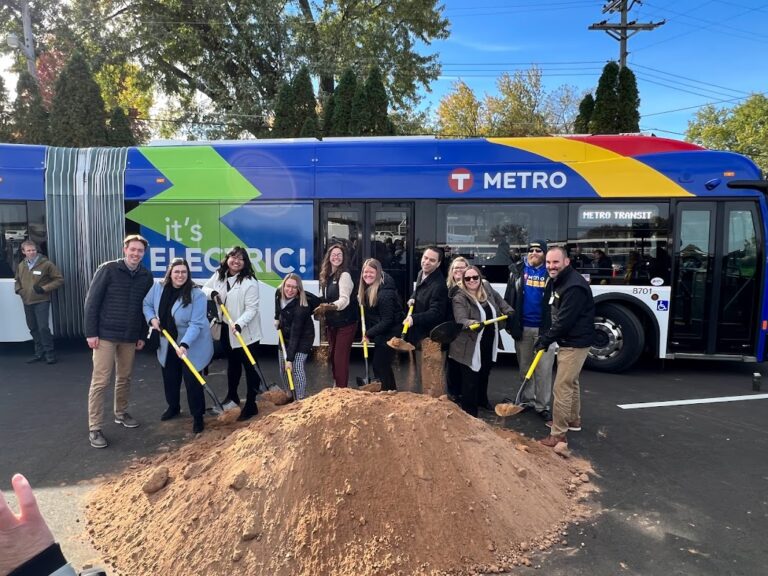
The METRO Gold Line BRT corridor will enhance connectivity for Metro Transit customers across the Twin Cities and support enhanced, efficient rider experiences.

